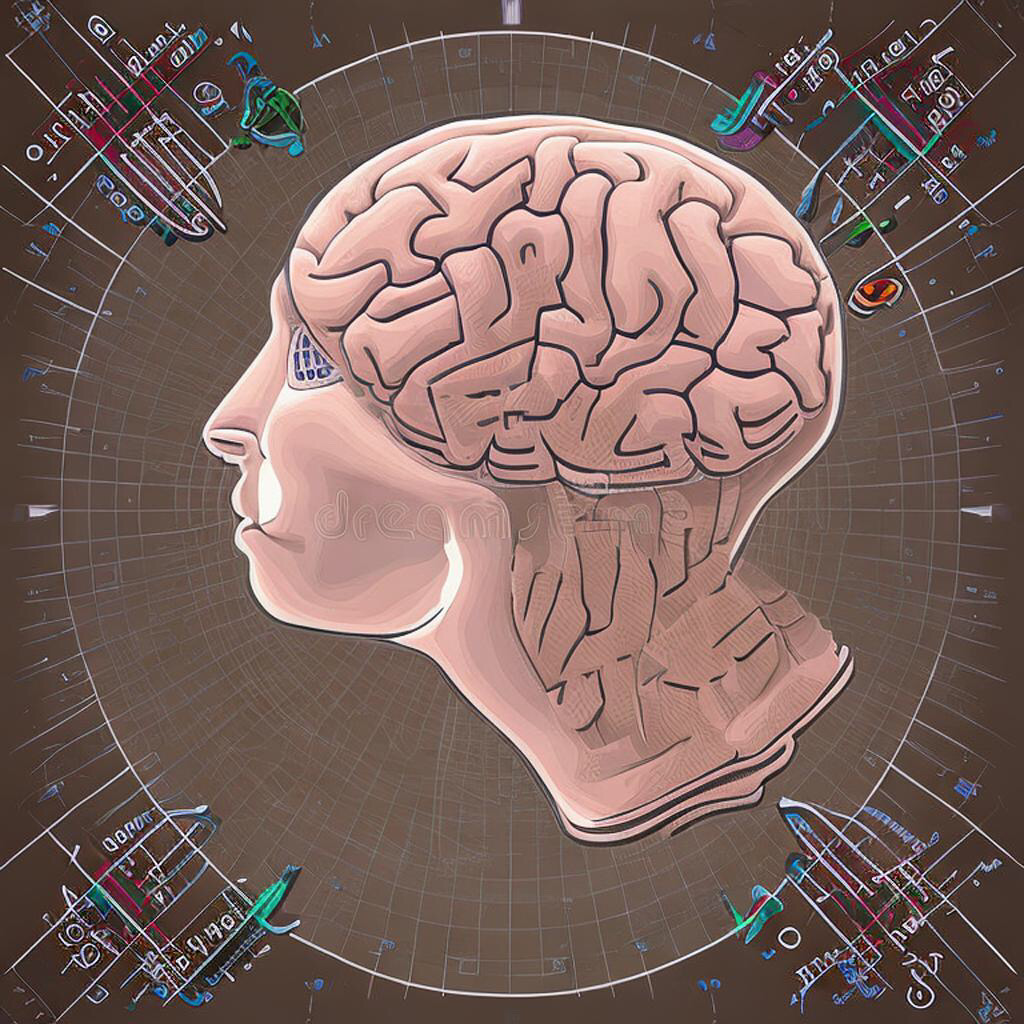
The Intricacies of the Human Brain
Memory is a complex cognitive function that allows humans to encode, store, and retrieve information about their experiences, skills, and knowledge. The intricate neural architecture of the human brain underlies this remarkable ability, with different types of memory being processed and stored in distinct regions. This article delves into the various memory types, the brain regions involved, and their respective functions.
Sensory Memory: The Briefest Form of Memory
Sensory memory is the initial and briefest stage of memory, lasting only milliseconds to a few seconds. It serves as a buffer for incoming sensory information, allowing the brain to process the stimuli before they are either encoded into short-term memory or discarded. Sensory memory is divided into different types based on the senses:
a. Iconic Memory: This form of sensory memory relates to visual information, enabling the brain to retain images for a very brief period, around 100-500 milliseconds.
b. Echoic Memory: Echoic memory pertains to auditory information, holding sounds for approximately 3-4 seconds to enable further processing.
c. Haptic Memory: This type of memory is related to tactile information, allowing the brain to retain touch-based sensations for about 2 seconds.
Short-term Memory (STM): The Temporary Storage Space
Short-term memory (STM) serves as a temporary storage system for information, allowing the brain to manipulate and process it for about 20-30 seconds. The capacity of STM is limited to around 7±2 items of information, although this can be expanded through a process called chunking. The prefrontal cortex plays a significant role in STM, with the hippocampus being involved in the consolidation of short-term memories into long-term memories.
Working Memory: The Cognitive Workbench
Working memory is an extension of STM and allows us to manipulate and use information temporarily while performing cognitive tasks. It comprises three components:
a. Phonological Loop: This subsystem is responsible for storing and processing verbal and auditory information.
b. Visuospatial Sketchpad: This subsystem manages visual and spatial data, assisting in tasks such as mental imagery and navigation.
c. Central Executive: This component coordinates and allocates resources between the phonological loop and visuospatial sketchpad, directing attention and processing information.
The prefrontal cortex, parietal cortex, and other brain regions are involved in working memory.
Long-term Memory: The Lasting Repository of Knowledge
Long-term memory (LTM) is the brain’s primary storage system for retaining information over extended periods, ranging from hours to a lifetime. LTM is divided into two primary categories:
Explicit (Declarative) Memory:
This type of memory involves the conscious recollection of facts and events. It is further divided into two subtypes:
a. Episodic Memory: This subtype stores personal experiences and events, allowing us to recall specific instances in our lives. The hippocampus, prefrontal cortex, and medial temporal lobes are crucial for episodic memory.
b. Semantic Memory: This subtype deals with general knowledge, concepts, and language. The temporal lobes, especially the medial temporal lobe, play a significant role in semantic memory.
Implicit (Non-declarative) Memory
This type of memory involves unconscious learning and skills, acquired without conscious effort. It is further divided into three subtypes:
a. Procedural Memory: This subtype is responsible for storing motor skills, habits, and routines. The basal ganglia, cerebellum, and motor cortex are involved in procedural memory.
b. Classical Conditioning: This subtype refers to the learning of associations between stimuli and responses, such as the association of a sound with a specific event. The amygdala, hippocampus, and cerebellum are involved in classical conditioning.
c. Priming: This subtype refers to the unconscious influence of past experiences on current behavior or cognition. For example, exposure to a word or image can prime the brain to recognize related words or images more quickly. The neocortex, particularly the temporal and occipital lobes, plays a role in priming.
The Role of Sleep in Memory Consolidation
Sleep is essential for memory consolidation, the process of stabilizing and integrating new information into long-term memory. During sleep, the brain replays and strengthens neural connections related to recent experiences, aiding in the consolidation and integration of memories. The interaction between the hippocampus and the neocortex is particularly crucial during sleep, with different stages of sleep (such as slow-wave sleep and rapid eye movement sleep) playing distinct roles in memory consolidation.
Memory Loss and Neurodegenerative Diseases
Memory loss can result from various factors, including aging, stress, and brain injury. Neurodegenerative diseases, such as Alzheimer’s and Parkinson’s, can also cause significant memory impairment. In Alzheimer’s disease, the progressive degeneration of neurons in the hippocampus and other brain regions leads to severe memory loss and cognitive decline. In Parkinson’s disease, the degeneration of dopaminergic neurons in the substantia nigra affects motor function and memory.
The human brain’s ability to encode, store, and retrieve information is a remarkable and complex function, involving different types of memory and distinct brain regions. Understanding the intricacies of memory not only sheds light on the amazing capabilities of the human mind but also contributes to the development of treatments for memory disorders and neurodegenerative diseases. As research continues to explore the depths of memory processes, we stand to gain valuable insights into the nature of human cognition and the potential for enhancing memory function.
Shop tip
Memory on Amazon
Thank you for reading, comments and shares!
Crafted with chatGPT Language Models and Picsart
Embark on the journey of creating your own website and mastering affiliate marketing within a vibrant online community. Start for free as a beginner and discover if this path suits you. Invest in your future and learn at your own pace, surrounded by supportive peers.







